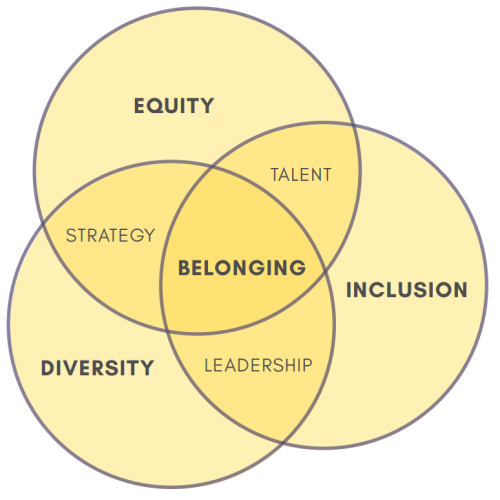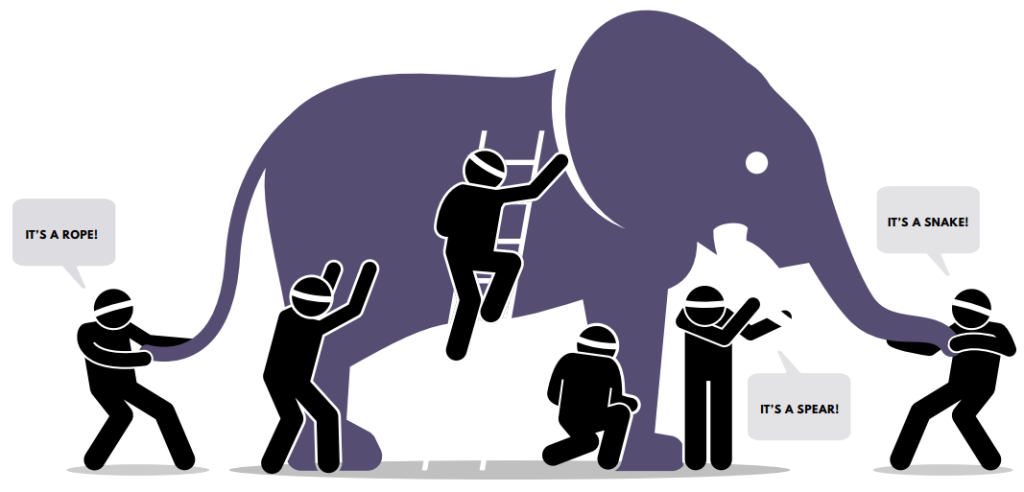5. Human Capital Requires Equity, Diversity & Inclusion
Human Capital Required Equity, Diversity & Inclusion
Goldin (2014) refers to human capital as, “the stock of skills that the labour force possesses.”13 A year ago, the stock of skills changed almost overnight, as workers and leaders had to pivot to avoid catastrophic loss, brought on by the pandemic. The flow of skills is not, nor has it ever been, stagnant. Skills and education are responsive, aligned in many ways with innovations that create competitive advantage and spark growth in dying industries. As industries diversify, the talent who hold the required knowledge and skill, also changes. Historically, human capital has focused on two major components; education and training. Those who had the means to acquire education and training prospered, those who did not were left behind. Yet, the pandemic unequivocally revealed that skills and knowledge are not solely tied to formal education, but more importantly tied to resilience, determination, and capability.14 In fact, one might argue that the more important third component of human capital (that was historically omitted yet now must be acknowledged) is health, both physical and mental health. While many will nod their heads and agree to these components, and the importance of human capital for recovery and growth, readers may be questioning how the definition of human capital intersects with the requirement for equity, diversity, and inclusion. To bring this together, let us turn to neuroscience.

Neuroscience reveals two components that will fundamentally change the way people think about belonging and wellbeing. While many are now conscious of the importance of including employees, one must not mistake inclusion with belonging. Inclusion simply denotes an invitation. Belonging publicly demonstrates to everyone, internally and externally, who is valued for their importance and perspective.15 Belonging is the missing fundamental factor, the cog if you will, in the projections that convert equity, diversity, and inclusion into usable organizational development methodology that produces returns on investment. First, behavioural neuroscience shows that belonging is a basic human need that drives performance and enhances wellbeing (physically, mentally, and emotionally). However, on the other side of belonging, neuroscience registers the pain of social exclusion, rejection, or ostracism and it is as real as stubbing one’s toe or cutting one’s finger.16 When talent, experiences exclusion, rejection, or ostracism, it triggers a lack of psychological safety and ignites the nervous system into survival mode.17 The concept of belonging from a neuroscience perspective thereby substantiates the initiatives for equity, diversity and inclusion allowing culture to become a positive driving force. Instead of asking, “Is belonging real?”, the better question is, “How does belonging become real?” Organizations need to consider that the psychological pain associated with exclusion, rejection and ostracism is experienced the same way as physical pain in the brain.18 Racism discrimination has also been linked to poor health studies in both the United States and United Kingdom.19 Recognizing these correlations as they pertain to the wellbeing of talent are important as they could have a significant impact on the future of work. These findings also further establish the urgency for developing a belonging-first culture.
Belonging is the missing fundamental factor, the cog if you will, in the projections that convert equity, diversity, and inclusion into usable organizational development methodology that produces returns on investment.
Collective Intentionality
Shared intention allows organizations to act together intentionally, creating collective goals, vision, and mission. When collective intentionality uses words without understanding their context, they lose their impact because they lack mental inference. While equity, diversity, and inclusion are seen as important, their mental inference and meaning have yet to be adequately defined for strategic advancement and organizational application.
These blindfolded individuals try to describe an elephant without context, understanding, and mental inference. As ESG strategies are developed to tackle equity, diversity, and inclusion, a similar occurrence is happening due to a lack of real understanding and grounded mental inference.
Based on Diversity Best Practices (2019), initiatives can improve the quality of an organization’s workforce and be the catalyst for a better return on investment (ROI) in human capital. The Sodexo Corporation is an example noting that for every $1 it has invested in mentoring, belonging, and succession planning it has seen a return of $19, according to Dr. Rohini Anand, the company’s senior vice president and global chief diversity officer.27 While many are still looking to create a solid strategy that delivers ROI, what is certain is that equity, diversity, and inclusion are gaining momentum and are being forced further due to environmental demands. Directives are at the precipice of collective intentionality, and once achieved, the industry will find remarkable things begin to happen.


